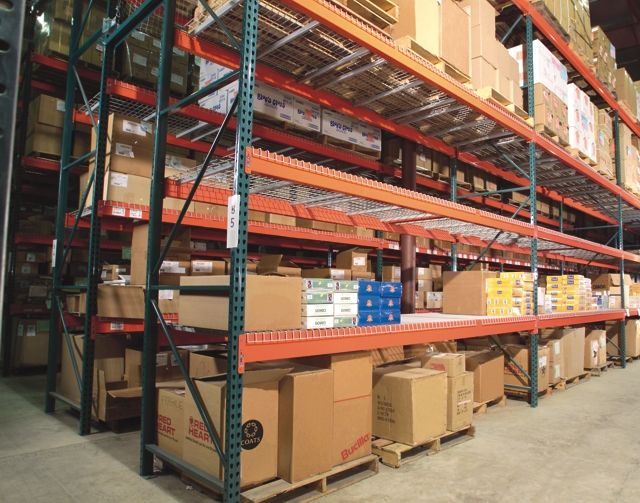If your facility has a Pallet Racking System and mechanical handling equipment in use, the danger of harm to at least one part of the Pallet Racking System is exceptionally high. Pallet Racking Systems are intended for high performance and to help stack products that are more than their weight. The Pallet Racking Systems are built according to precise specifications and standards that guarantee they perform within designed load applications corresponding to the configuration for many years.
However, the design specifications and safety factors issued by the pallet racking manufacturer typically do not take into account the loss of capacity and integrity once the pallet racking system has been damaged. Nothing affects the integrity of a pallet rack system like a forklift impact. Operators are not likely to report a collision involving pallet racking structures, so the damage can go undetected. This highlights the significance that Pallet Racking Systems should be regularly assessed and maintained to preserve original designed capacity.
We understand that not everyone is aware of the factors they should consider before buying Pallet Racking Systems. Therefore, we have compiled a list of factors to ensure a safe working environment for everyone.
How Should Pallet Racks be Inspected?
The employer should establish and implement a program of regularly scheduled storage rack system inspections. The inspections should be performed by a qualified person familiar with the storage rack design and installation requirements retained or employed by the storage rack system owner.
Storage racks should be inspected periodically to check for any damage or abuse and immediately after any event that occurs that may result in damage to the rack. The frequency of inspections is up to the discretion of the owner and dependent on the conditions of use. At a minimum, inspections should be performed annually. The inspection schedule and results of the inspection should be documented and retained.
What to Inspect?
Generally there are four conditions to inspect pallet racking systems for:
- Plumb And Straight:
According to International Racking Standards, the maximum top to bottom out of plumb ratio for a loaded rack is Total Rack Height/240 inches. For example, a 15 foot (180 inches) column upright height maximum plumb ratio would be 180/240 or ¾ of a foot. This is measured from the centerline of the column upright at the floor to the centerline of the column upright at the top of the shelf elevation.
- Visible Rust or Corrosion:
Any rust or corrosion can indicate weakening metal. If paint is scraped, a rack may have suffered a collision and should be checked for plumbness and straightness of the upright columns.
- Loading Capacity:
Each manufacturer publishes frame capacity charts. Applicable information should be prominently displayed on a placard at the end of each aisle. Never change original configuration or weight load without the approval of an engineer. If an approved modification is made, remember to change the placards to reflect the new pallet racking specifications. Overloading can lead to beam deflection. According to International Racking Standards, the maximum allowable deflection is Length of the Beam/180 inches.
When a pallet rack is damaged, occasionally a cross member may be replaced with whatever piece of steel is convenient and held in place with whatever fasteners were handy at the time. As a non-engineered modification, this type of repair can be dangerous.
- Damage:
Damage to specific components of a pallet racking system is the most common and serious problem that can affect the integrity of the racking system. Most common components involved in damage are beams, upright columns and foot plate/anchors.
- Beams: Any beam with visible deformation or cracking of the beam end connectors should be unloaded and replaced. Be sure beams are fully engaged and installed with proper safety locks.
- Upright columns: Any rips, tears beyond the manufacturer limits need to be repaired or replaced. Any deflection gap greater than ½ inch (ANSI MH16.1-2012) in either the down aisle or front to back direction must be repaired or replaced. This also includes horizontal and diagonal struts. See image 3.
- Foot plate/anchors: Any front and back foot plates which are torn, ripped or twisted past ½ inch square. See image 4 below. Each footplate of the upright (front and back) must be anchored to the floor. Check for missing, loose or sheared anchors.
Note: A trick to measure for damage to upright columns is to place a steel straight edge (ruler or level) on the surface of the concave side of a damaged upright column segment. The straight edge should be centered on the damaged section’s length as accurately as possible. This will allow for a more accurate measure of the gap distance.



